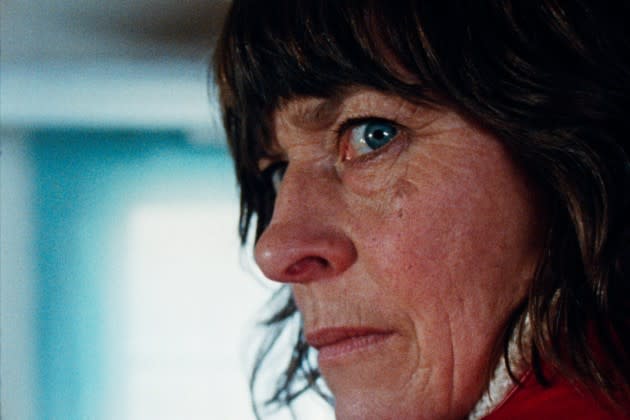Cannes Review: Mark Jenkin’s ‘Enys Men’
- Oops!Something went wrong.Please try again later.
- Oops!Something went wrong.Please try again later.
- Oops!Something went wrong.Please try again later.

Mark Jenkin’s 2019 film Bait had the rare distinction of being a genuine out-of-the-blue discovery, featuring heavily on UK critics’ year-best lists after a modest arthouse release by the BFI. The black-and-white film’s experimental style was emphasized in all its press coverage, nodding to avant-garde auteurs like Stan Brakhage, Derek Jarman and Guy Maddin — all directors who are interested in the literal grain of film and video (indeed, Jenkin reportedly developed the negative with coffee and washing soda then distressed the image by hand). Throw in post-synch sound, and you have a film more likely to screen to two people and a dog at a smoky underground 1960s cine-club than win a BAFTA.
For all its formal intricacies, though, Bait had a very traditional narrative, being the story of a Cornish fisherman who sees his village becoming gentrified after selling his house to a couple of rich out-of-towners. Enys Men, Jenkin’s Directors’ Fortnight entry here in Cannes, despite making the upgrade to color and a significantly higher budget, is actually a tougher sell; there is only one main character, and everything that happens to her is framed as a kind of delirium. Like Bait, it is quite militantly parochial (which has its positives), but there are an enormous amount of ideas and allusions in the mix here that are specialist even in genre circles.
More from Deadline
Jumping the gun somewhat, Jenkin describes his film as “a lost Cornish folk horror,” which saves a lot of time for everyone. Initially an unheralded fad in the 1970s with films such as The Wicker Man and The Blood on Satan’s Claw, folk horror has grown exponentially as a cultural touchstone ever since, mostly among British directors such as Ben Wheatley, Peter Strickland, Corin Hardy and the creative team behind the BBC’s cult series Inside No. 9.
Central to the thesis of folk horror is the notion that nature is all-powerful and completely unknowable, which is why more than a few folk horrors — which usually take rational people from their civilized comfort zones and put them at the mercy of an overwhelming primal force — cross over into psychedelia, as Enys Men does.
Unusually, Jenkin’s film centers on a woman (Mary Woodvine), who is referred to in the final credits, and there alone, as The Volunteer. What has she volunteered for? It’s hard to tell. Her daily routine, which we see with hypnotic repetition, involves checking the weather, the plant life and, in a ritual involving a disused mine shaft, quite possibly the sea level.
The island is deserted, but there are pagan stones that exude a preternatural energy, and The Volunteer begins to intuit the presence of a long-gone mining community. At the same time, she flashes on moments from her past and glimpses visions of what might be about to happen — small wonder she wears a bright red raincoat like the one made famous in Nicolas Roeg’s Don’t Look Now, a seminal film in terms of editing, with its provocative melding of past, present and future.
Roeg is just one of many melting-pot influences in a film that outs its director as a man of a certain age (mid-40s). Enys Men simply teems with references that Jenkin will have consumed whether knowingly or not — the visual style recalls public information films — and it seems unlikely that he wouldn’t know by now that Cornwall was the setting for Hammer’s 1966 chiller Plague of the Zombies, which involves Haitian voodoo in a Cornish tin mine.
Plenty of literary echoes can be found too, largely from children’s fiction — books like Marianne Dreams, Charlotte Sometimes and The Owl Service, and, thanks to the internet, we might even put the once-lost 1976 HTV series Children of the Stones or the Hammer House of Horror episode ‘Two Faces of Evil’ into the mix.
This is not to say that Enys Men is pastiche of these things, rather that it’s evocative of them: the multimedia equivalent of a wall of sound and an immersive experience made even more haunting by its sparing use of ambient noise and folk music. When it ends, Jenkin’s film leaves you with the curious feeling that the real film is just about to start. It’s unnerving; a sensation that is both unexpected and, oddly, rather satisfying.
Best of Deadline
NFL 2022 Schedule: Primetime TV Games, Thanksgiving Menu, Christmas Tripleheader & More
TV Cancellations Photo Gallery: Shows Ending In 2022 & Beyond
Sign up for Deadline's Newsletter. For the latest news, follow us on Facebook, Twitter, and Instagram.

